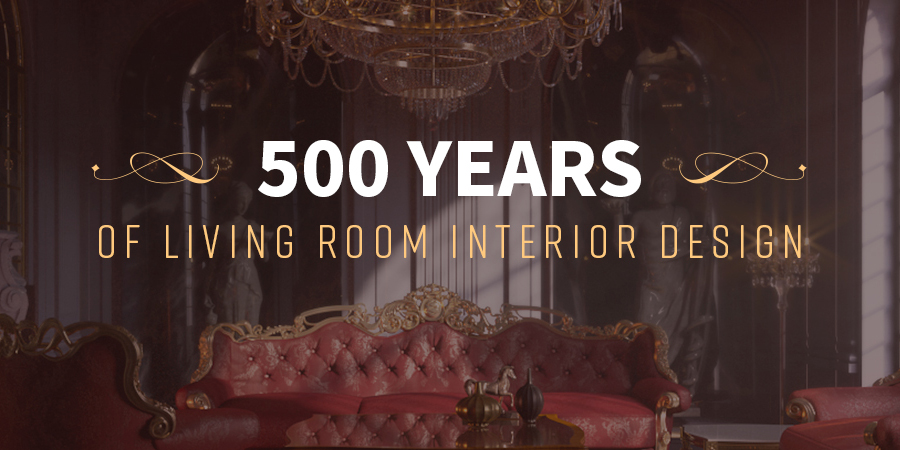A living room is more than just a place to sit. Your living room’s interior design, whether stylish and spotless or homely and haphazard, is an expression of who you are.
Though Ancient Egyptians started the trend of decorating their home interiors, the art of creating an inspiring space to live really took off in the west with the French Renaissance in the 15th and 16th centuries. And interior design has continued to evolve ever since. Here, Home Advisor created an animation and poster set to illustrate how interior design has changed over the past 500 years.
Renaissance (1400 – 1600)
Art and culture were reborn as the French Renaissance spread across Europe. Architects found a renewed enthusiasm for ornate decoration and fine detail, inspired by a new sense of humanism and freedom. Arabesque and Asian influences revitalized the decorative arts, and careful attention to symmetry and geometry brought a new sense of harmony to European interiors.
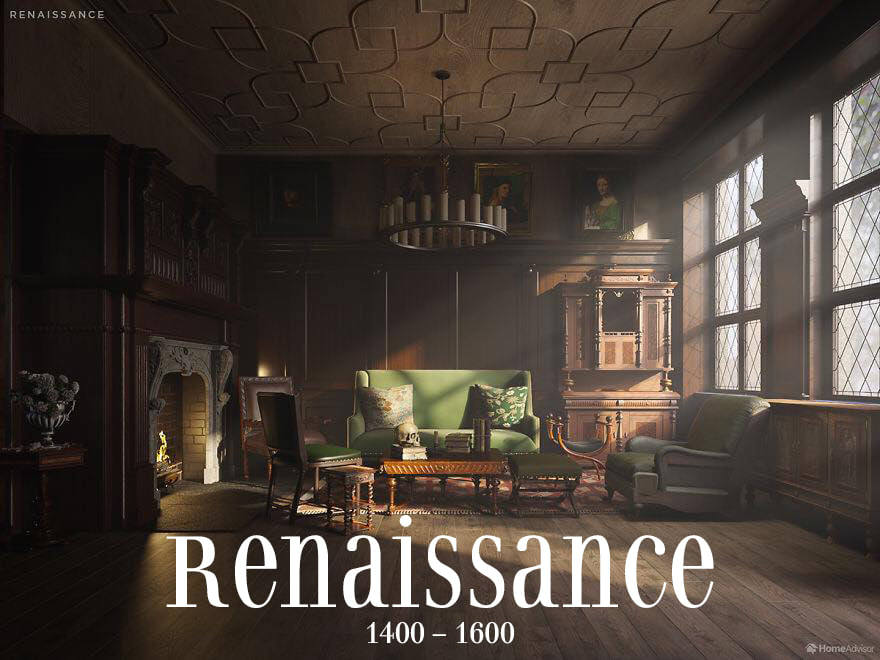
Baroque (1590 – 1725)
Turkish rugs fell out of fashion during the Baroque period, as more opulent and elaborate architecture required fixtures and fittings to match. The Catholic Church was the first to develop this new sense of affluence as an attempt to impress the uneducated masses with their wealth and power.
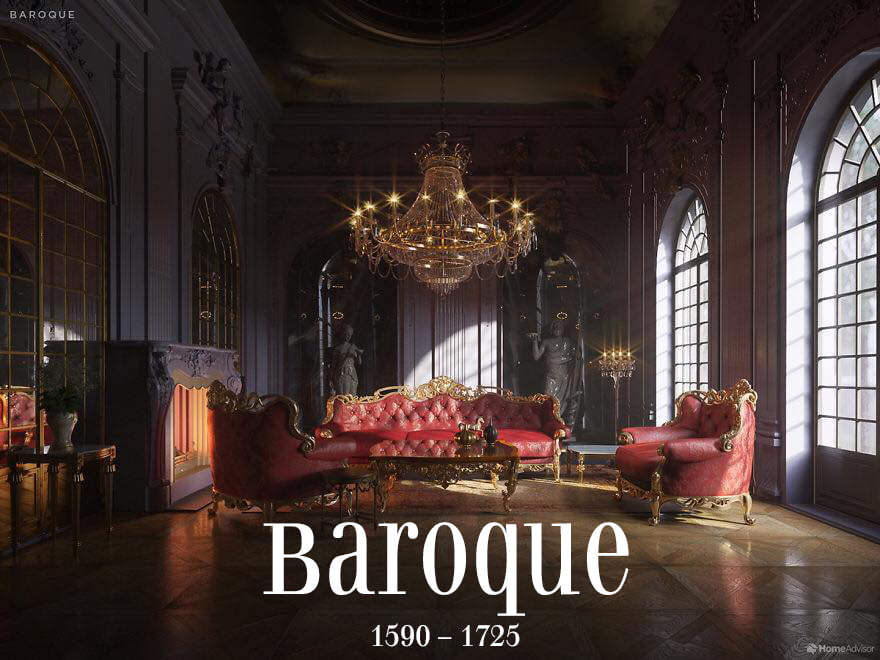
Rococo (1700)
Towards the end of the Baroque period, a subset of the style briefly stole the limelight. Rococo style (from the French word rocaille, meaning shell ornamentation) was famous for just three decades during the reign of Louis XV. It is lighter, more whimsical, and freer than Baroque. For some, it better suited the intimacy of the family home than the grand church style that came before it.
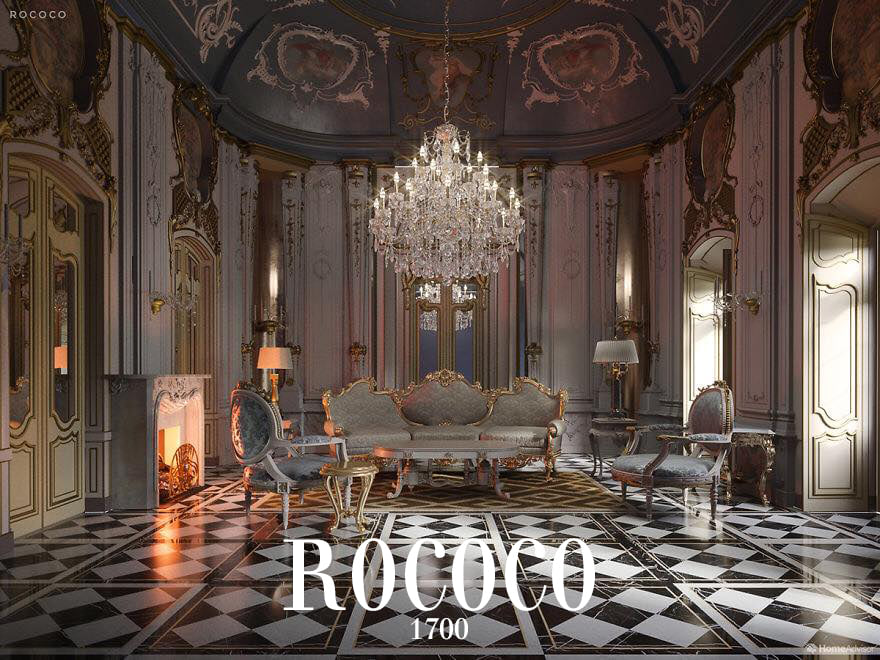
Neoclassical (1780 – 1880)
The late Georgian era ushered in a new age of architecture that responded to the Baroque and Rococo periods. The rediscovery of Pompeii contributed to new understandings of Roman and Greek architecture. This inspired a movement towards more ‘tasteful,’ refined, and timeless design principles, free from the pomp and novelty of the Baroque trend.
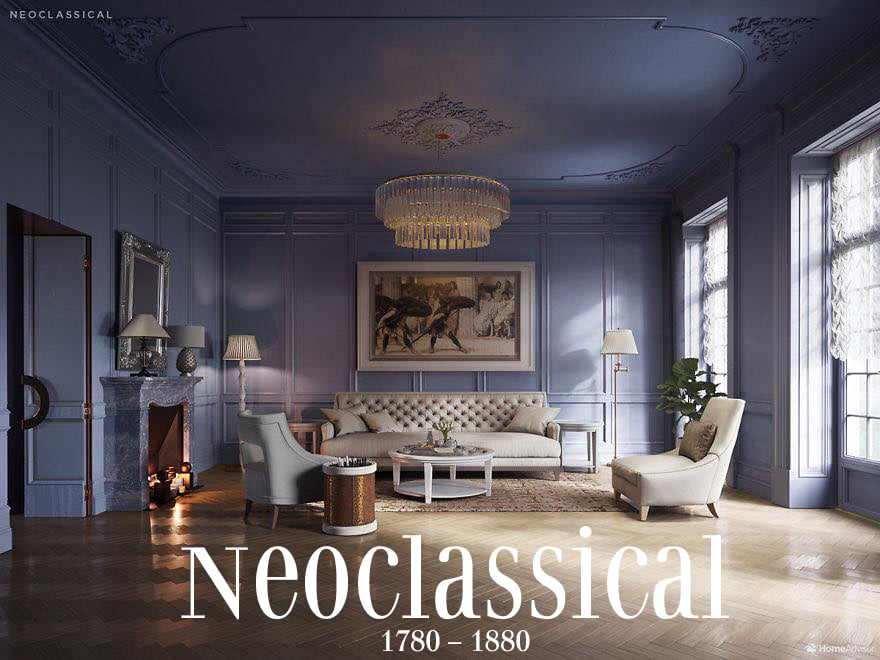
Arts and Crafts (1860 – 1910)
The Arts and Crafts movement began in England as a reaction against the mechanization of creativity and the economic injustices of the industrial age. It was not so much a style as an approach, putting the responsibility for design and craft back in the hands of skilled workers. However, Arts and Crafts interiors shared an aesthetic of simplicity, quality of material, and a connection to nature.
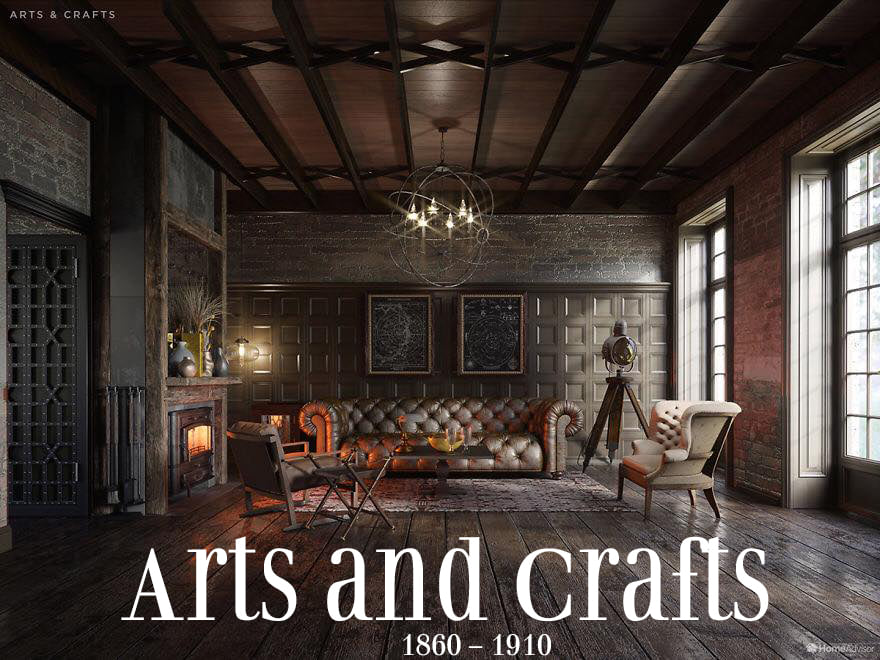
Modernism (1880 – 1940)
Like the Arts and Crafts movement, Modernism is less of a style than a philosophy. “A house is a machine for living in,” said Swiss architect and designer Le Corbusier, the pioneer of Modernism. The Modernist living room utilized the latest materials and technologies. It was designed to be comfortable, functional, and affordable. Beauty was a bonus, although elegant design solutions were highly valued.
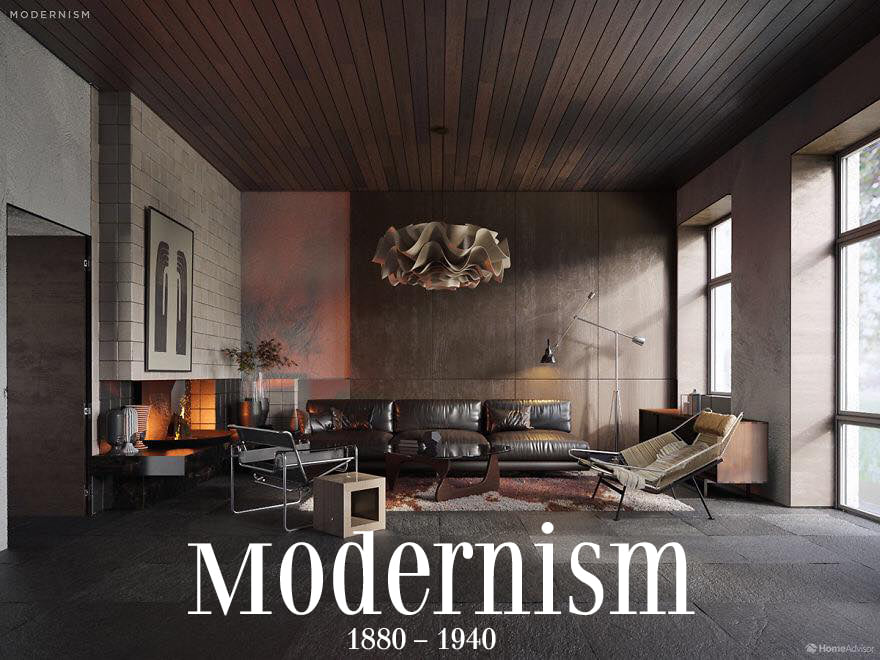
Art Nouveau (1890 – 1920)
Art Nouveau was a ‘new art’ for a new century. Interior designers paired handcraft with new industrial techniques, which often made for an expensive process. Furniture and fittings were extravagant and modern, exhibiting the influence of Japanese art, which European artists were seeing for the first time near the end of the 19th century.
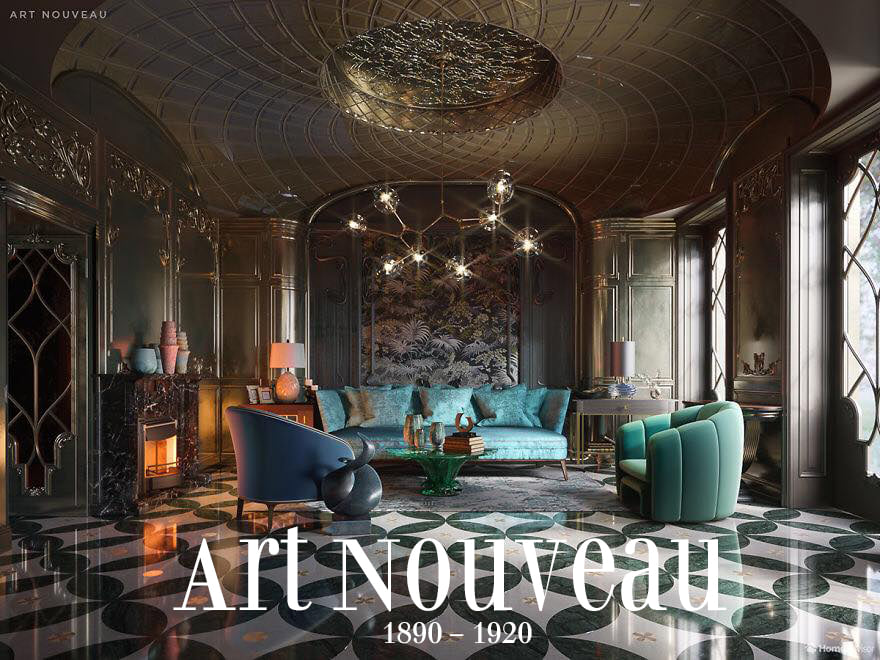
Bauhaus (1919 – 1934)
The Bauhaus (rhymes with ‘cow-house’) was a hugely influential German school of art and architecture. It existed for just 14 years until the Nazi government closed it down in 1933. Bauhaus design was a radical subset of Modernism, with greater emphasis on the human spirit and the craftsperson. As with Modernism, form followed function. Bauhaus interiors were true to their materials, meaning that they didn’t hide the underlying structure of a furniture piece to make it pretty.
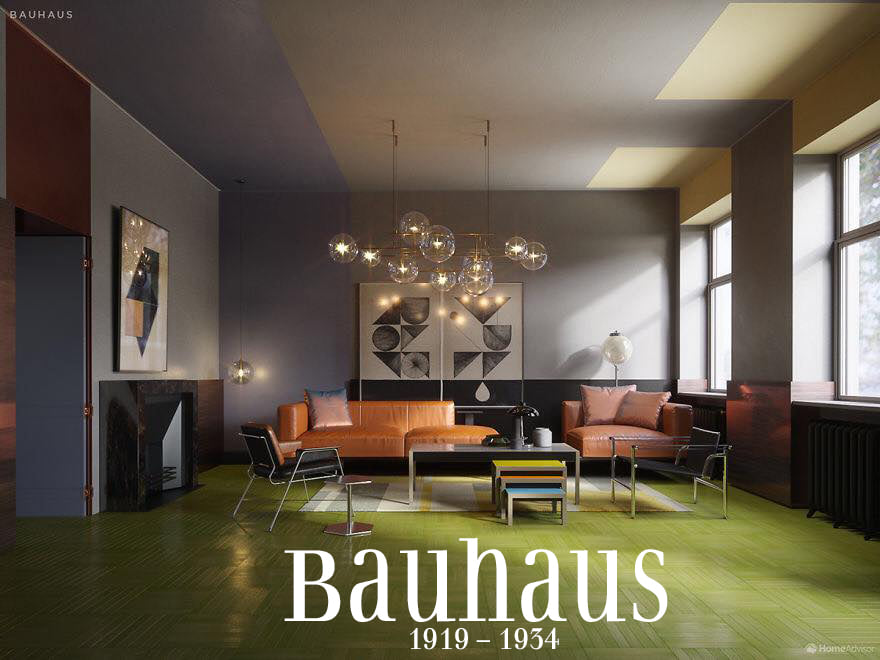
Art Deco (1920s to 1960s)
If Bauhaus and Modernism were the utilization of 20th-century advances, Art Deco was a glamorous celebration. Interior designers were inspired by the geometry and motion of the machine age, materials and symbols of ancient cultures, and rebirth in nature. And they weren’t afraid to use them all together.
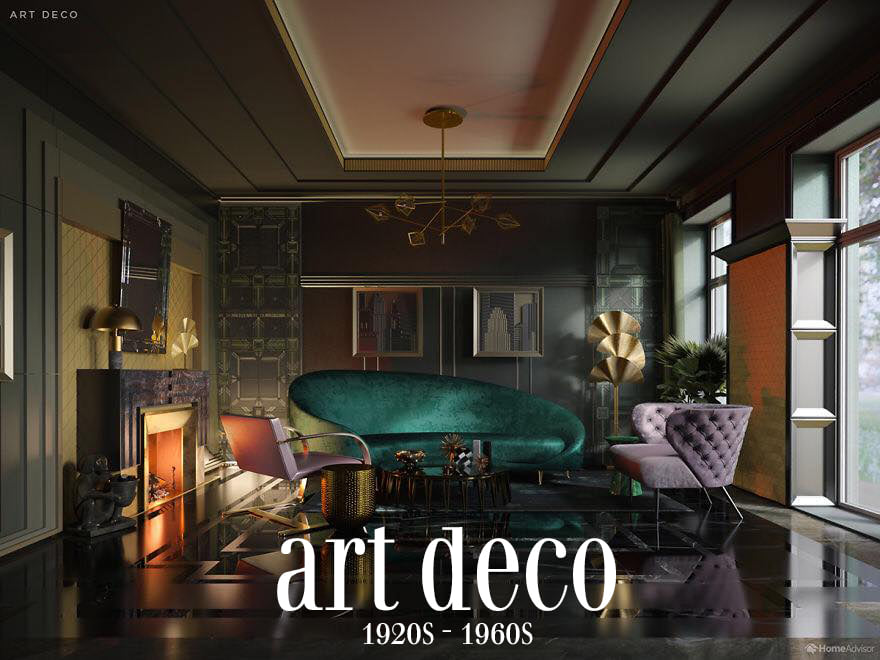
Mid-Century Modern (1930 – Today)
The Mid-Century Modern movement emerged as a softer, suburban take on Modernism, integrating natural elements. Interior designers introduced rustic elements and freer use of color inspired by Scandinavian and Brazilian furniture trends. Materials such as rattan, bamboo, and wicker felt both natural and modern when brought into the living room in the form of chairs, mirrors, and trim.
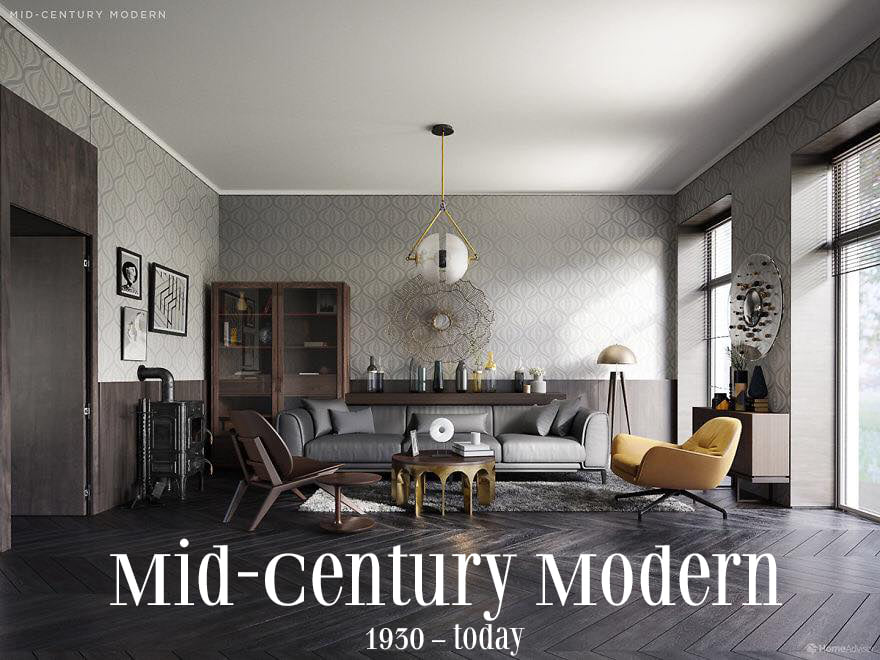
Postmodern (1978 – Today)
Postmodern design can trace its artistic influences from epoch-defining surrealist, Marcel Duchamp, to Pop Art’s crown jester, Andy Warhol, to the ambiguous Bad Taste of Jeff Koons. It all came together in the 1980s when designers threw off the shackles of Modernism and approached interiors with a sense of humor and the brash confidence we associate with the decade.
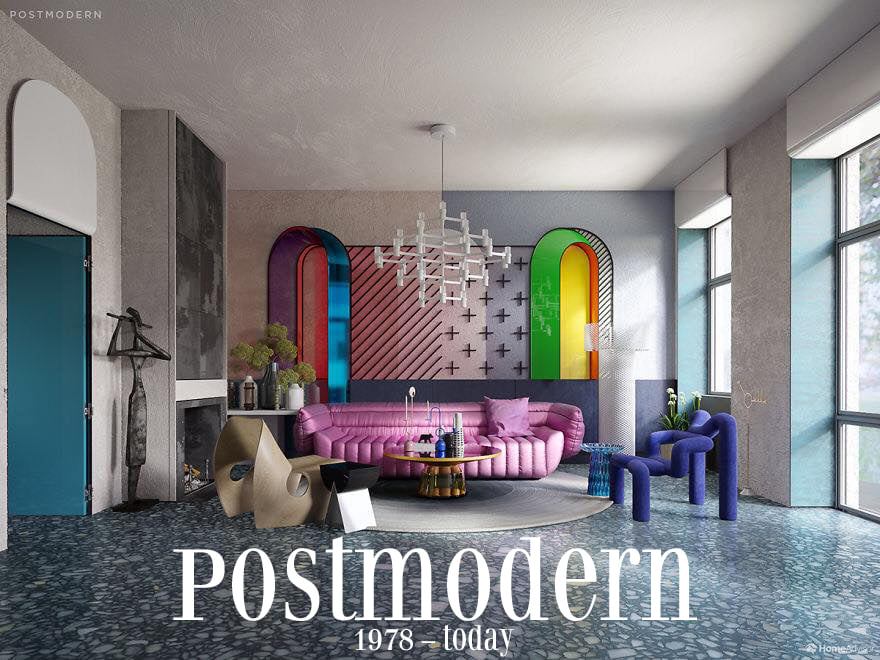
Contemporary (1980s – Today)
A cluttered age calls for a pared-back living room. Today’s contemporary style borrows the clean lines of Modernism and the airy, outdoors feel of the Mid-Century Modern home. Interior designers in the late 2010s love to give a nod to Bauhaus by peeling away surfaces to show the materials at work. However, today’s cutting-edge building materials and textiles can sit happily alongside repurposed industrial features from past eras.
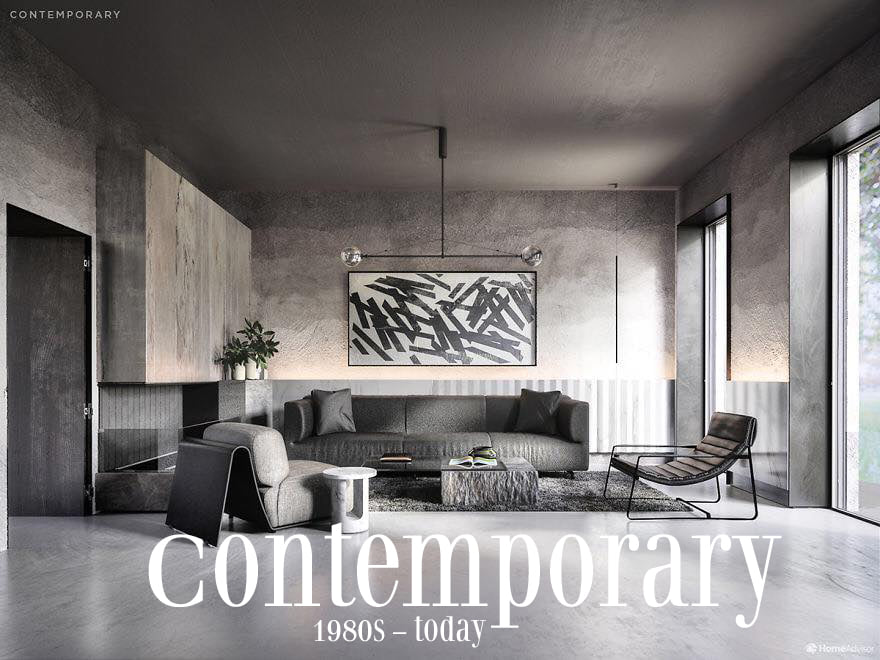
via Home Advisor



